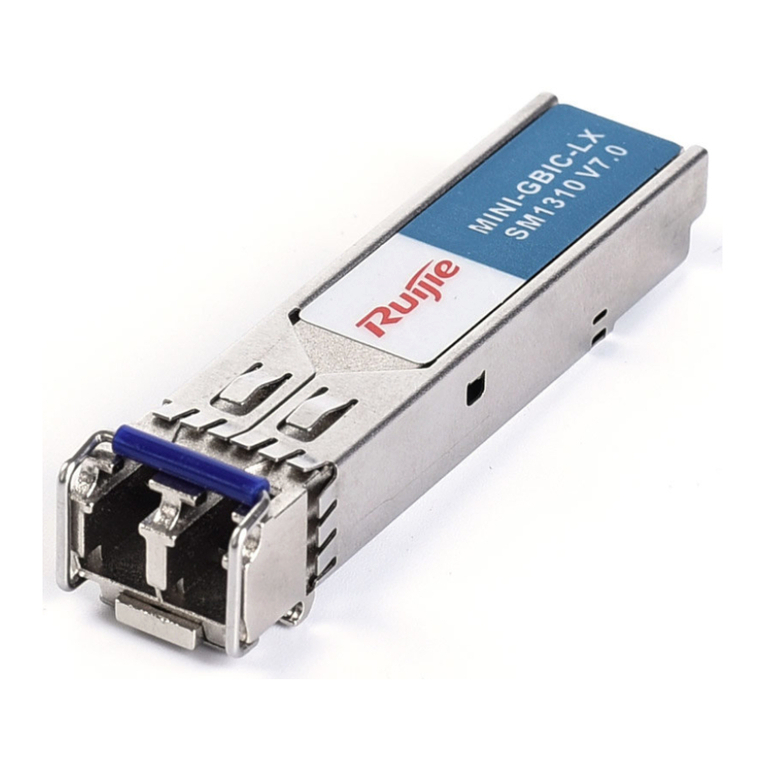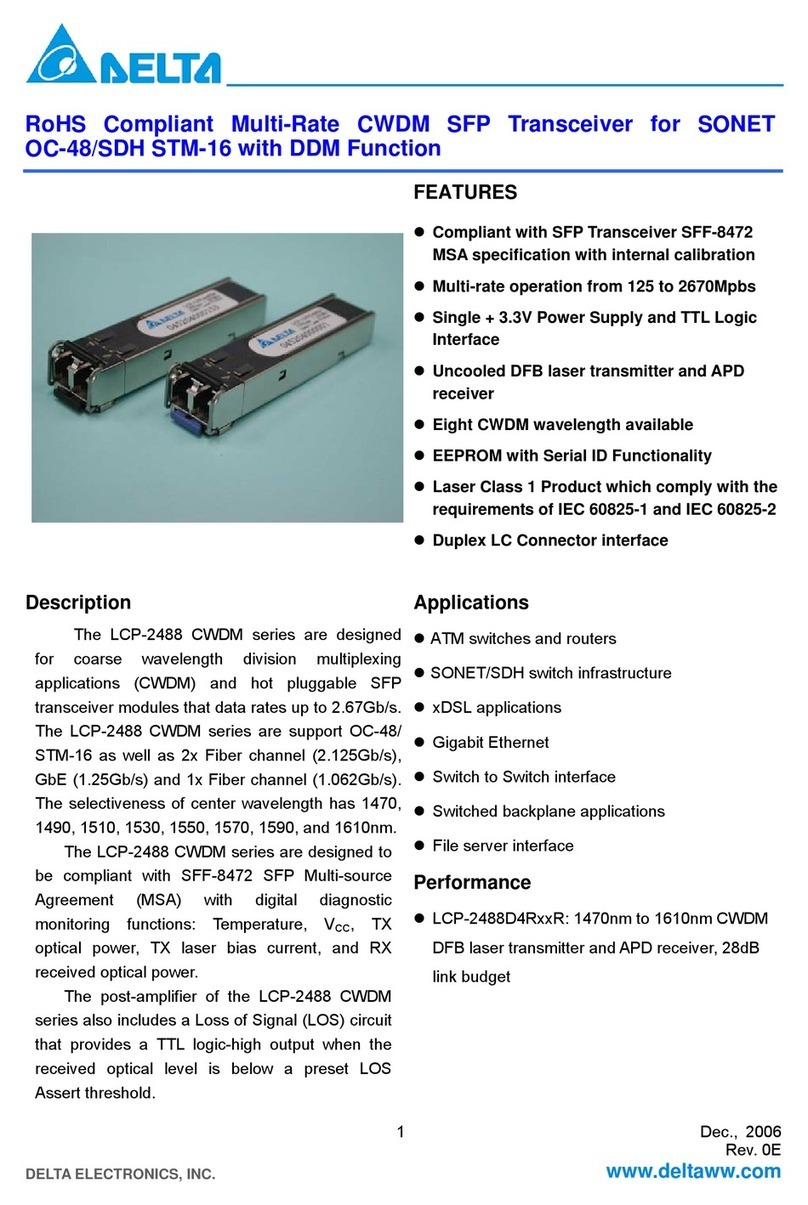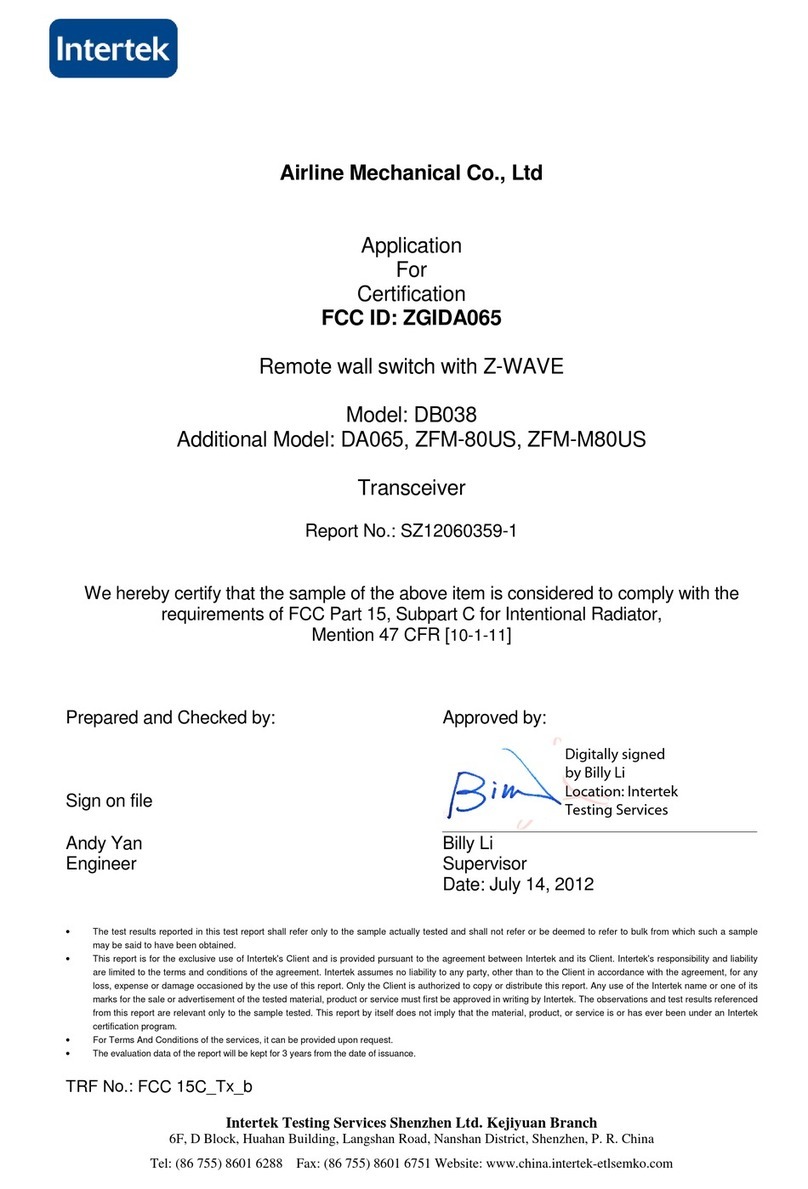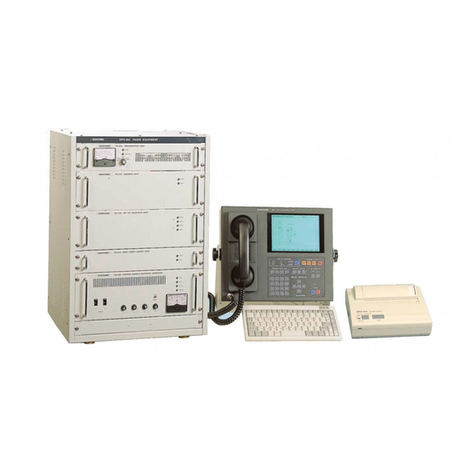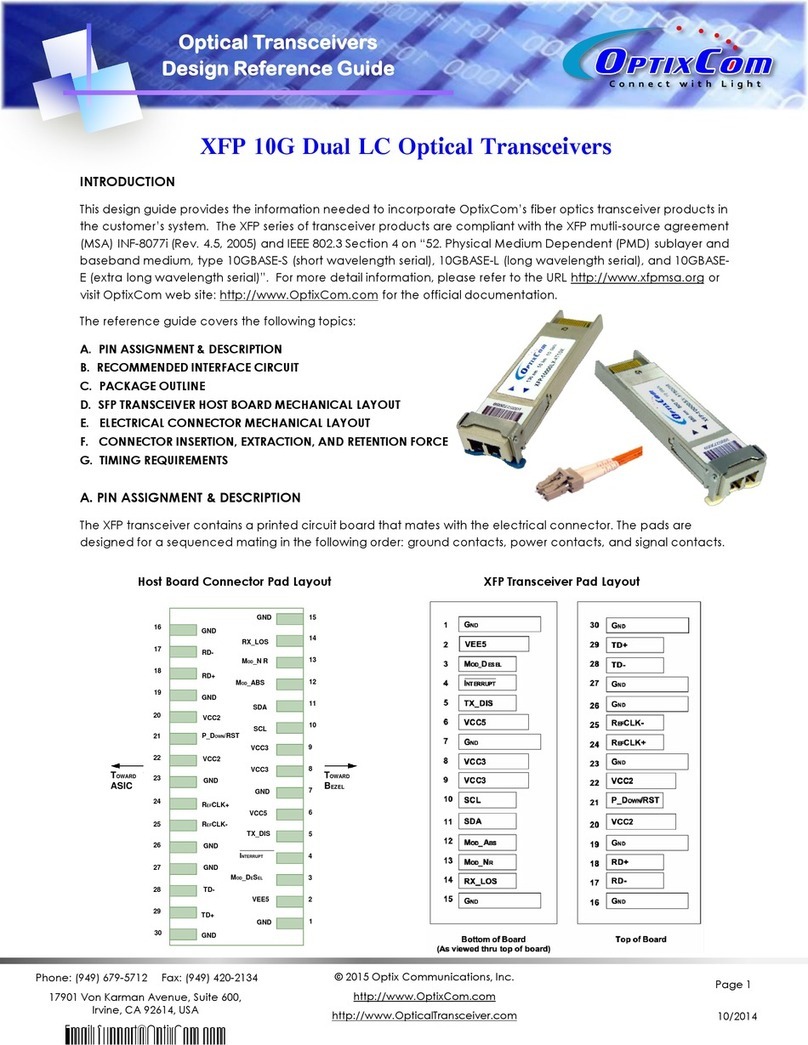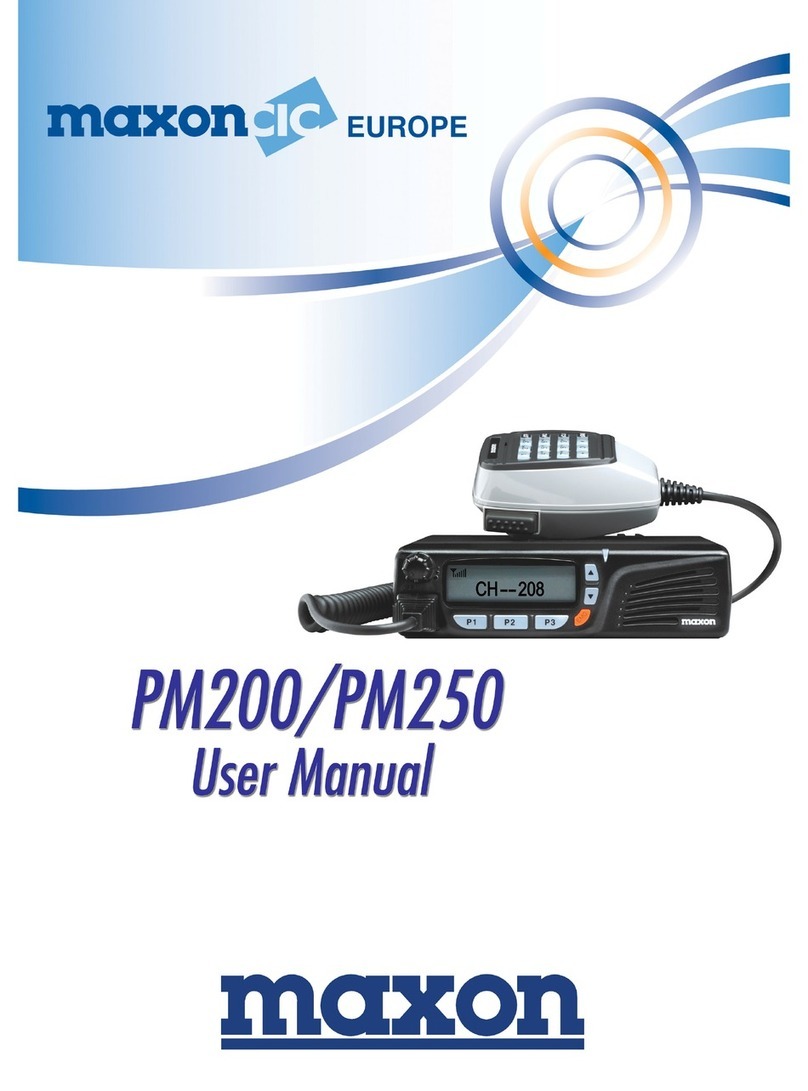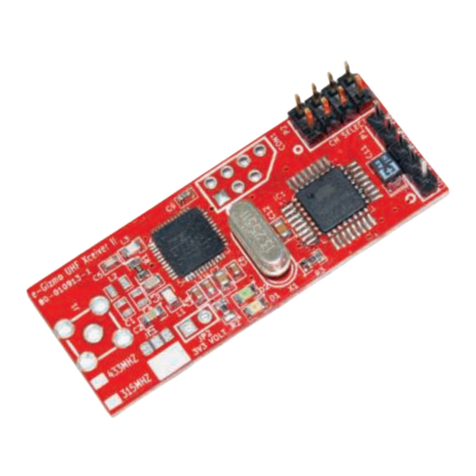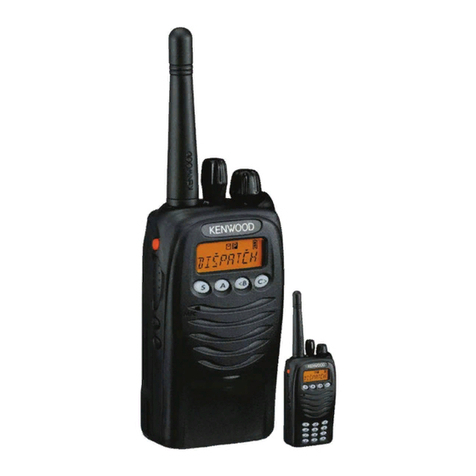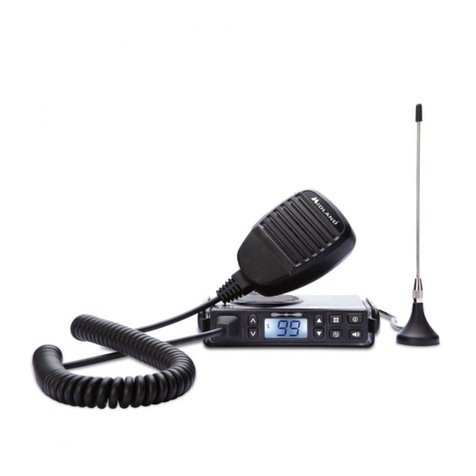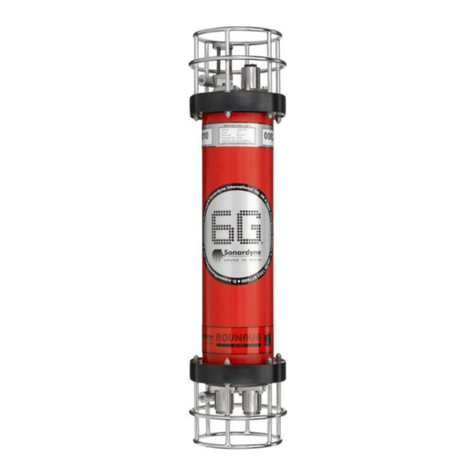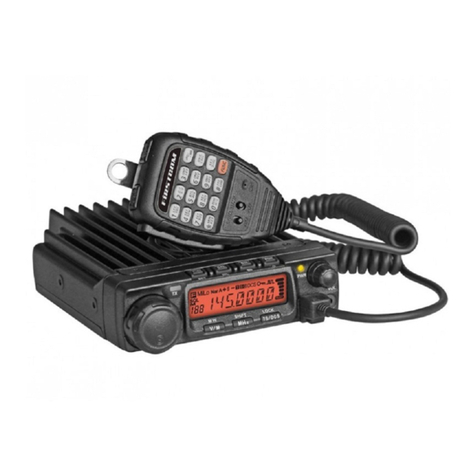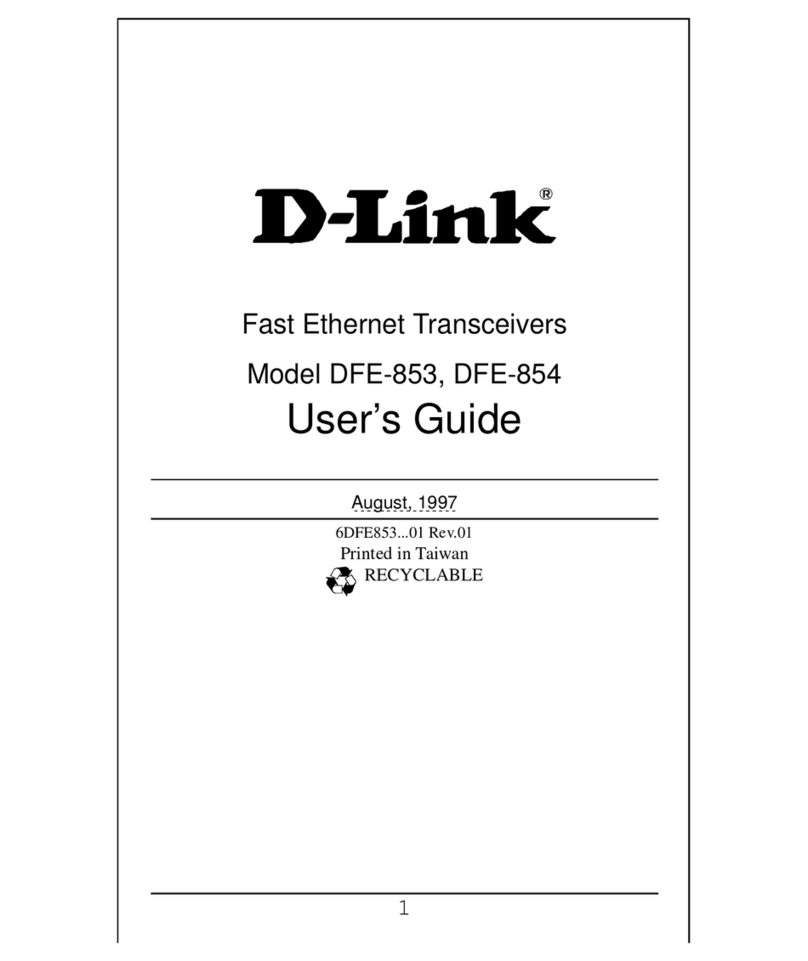Kongsberg HPR 400 User manual

Installation Manual
I
130314 / F
130314
HPR 400 Transceiver Unit
This document describes the installation of the HPR 400
Transceiver Unit. This unit is used with all HPR 400 Series
Hydroacoustic Positioning Reference systems.

HPR 400 Transceiver Unit
II 130314 / F
Document history
Rev Date Written by Checked by Approved by
F29.04.08 GM HAA JEF
Updated layout. Minor corrections in the text.
Copyright
© 2008 Kongsberg Maritime AS. All rights reserved. The information contained in this
document remains the sole property of Kongsberg Maritime. No part of this document
may be copied or reproduced in any form or by any means, and the information
contained within it is not to be communicated to a third party, without the prior written
consent of Kongsberg Maritime.
Disclaimer
Kongsberg Maritime endeavours to ensure that all information in this document is
correct and fairly stated, but does not accept liability for any errors or omission.
Warning
The equipment to which this manual applies must only be used for the purpose for
which it was designed. Improper use or maintenance may cause damage to the
equipment and/or injury to personnel. The user must be familiar with the contents of
the appropriate manuals before attempting to operate or work on the equipment.
Kongsberg Maritime disclaims any responsibility for damage or injury caused by
improper installation, use or maintenance of the equipment.
Support
All Kongsberg Maritime products:
Phone 24 hour: +47 815 35 355
E-mail: km.support@kongsberg.com
HiPAP, HPR, ACS and ACU:
Phone 24 hour: +47 992 03 808
E-mail: [email protected]
Strandpromenaden 50
P.O.Box 111
N-3191 Horten,
Norway

Installation Manual
III
130314 / F
High voltage safety warning
The voltages used to power this equipment are potentially lethal.
Even 110 volts can kill.
Whenever possible, the following precautionary measures
should be taken before any work is carried out inside the
equipment:
•Switch off all high-voltage power supplies.
•Check the operation of any door interlocks and any other
safety devices.
•Completely discharge all high-voltage capacitors.
It should be noted that interlocks and safety devices are
normally located only at regular access points, and high voltages
may be exposed during dismantling.
Caution Never work alone on high-voltage equipment!
Refer to general safety procedures.

HPR 400 Transceiver Unit
IV 130314 / F
Contents
INTRODUCTION 1..............................................
TECHNICAL SPECIFICATIONS 2...............................
Transceiver Unit 2...............................................
6U cabinet 2....................................................
Power supply 2.................................................
Environmental 2................................................
INSTALLATION 4...............................................
Introduction 4..................................................
Unit location 4..................................................
Physical location 4.........................................
Cable lengths 4............................................
Logistics 4.....................................................
Procedures 5...................................................
19” rack 5................................................
6U cabinet 8..............................................
CABLING 10......................................................
General information 10............................................
References 10...................................................
Procedure 10....................................................
Transducer cable connection 10.....................................
Connections 11..................................................
Transceiver unit pin allocations 13...................................
Introduction 13.............................................
Serial 1 13................................................
Serial 2 13................................................
Serial 3 13................................................
Serial 4 14................................................
Serial 5 14................................................
Serial 6 15................................................
Parallel 15.................................................
Analogue I/O 16............................................
Gyro/syncro 16.............................................
Responder 1 - 4 17..........................................
Transducers 1 and 2 17.......................................
Transducers 3 and 4 17.......................................
DRAWING FILE 18...............................................
1.1 Overview 18................................................
1.2 Drawings 18................................................

Installation Manual
1
130314 / F
INTRODUCTION
This document describes the installation of the HPR 400
Transceiver Unit. The Transceiver Unit contains the
transmission and reception electronics for the system, and will
normally be located in the sonar room next to the hull unit.
Some drawings and diagrams are included in the text, though
refer to the Cable layout document for detailed instructions on
the interconnections.
Note The guidelines for installation presented here must be regarded
as a base for detailed plans to be prepared by the installation
shipyard. These plans must include drawings, instructions and
procedures specific to the ship in which the equipment is to be
installed. These drawings must be approved by the local
maritime classification society before use.
Kongsberg Maritime accepts no responsibility for any damage
or injury to the system, ship or personnel caused by drawings,
instructions and procedures not prepared by Kongsberg
Maritime.

HPR 400 Transceiver Unit
2130314 / F
TECHNICAL SPECIFICATIONS
Transceiver Unit
Height 135 mm
Width 483 mm
Depth 310 mm
Weight Approximately 20 kg
6U cabinet
Height 371 mm
Width 600 mm
Depth 480 mm
Weight Approximately 43 kg
Refer to drawing no. 830-102971 in the drawing file for further
details of the 6U cabinet dimensions.
Power supply
Voltage 196 to 253 Vac, 1 phase or
39 to 64 Vdc
Frequency 50 - 60 (47-63) Hz
Power consumption 55 W
Maximum current 10 A
The power supply must be kept within ±10% of the unit’s
nominal voltage. The maximum transient voltage variations on
the main switchboard’s bus-bars which could occur (except
under fault conditions), are not to exceed -15% to +20% of the
nominal voltage.
Environmental
Temperature:
Storage -20 to +65°C
Operational 0to+55°C

Installation Manual
3
130314 / F
Humidity:
Storage 90% relative
Operational 80% relative
Degree of protection (in cabinet) IP 22
If the HPR 400 Transceiver Unit is mounted in a 19” rack, the
appropriate protection must be prepared by the installation
personnel.
The unit must be kept in an operational environment with the
room temperature and humidity within the specified limits, and
in a dust-free atmosphere.

HPR 400 Transceiver Unit
4130314 / F
INSTALLATION
Introduction
The transceiver unit comprises an aluminium strip and plate
framework intended for mounting into a standard 19” rack.
Ensure that the depth of the rack is sufficient for the required
cabling. The HPR 400 system computer (APC 10), keyboard
and display may be mounted into the same 19” rack.
The HPR 400 Transceiver Unit can be supplied installed in a
small 19” rack with height 6U. It may also be mounted in an
operator console with an integrated keyboard, joystick and
display. In such cases, the procedures in this document are for
reference only.
Unit location
Physical location
The transceiver unit should be located in the vicinity of the hull
unit, either in the same compartment or in another compartment
close by.
Cable lengths
The maximum distance between the transceiver unit and the hull
unit is restricted by the length of the transducer cable. This cable
may be maximum 300 meters long, but you are recommended to
keep it as short as possible.
The serial line cable between the transceiver unit and the APC
10 can be a maximum of 1000 meters.
Logistics
Safety -Refer to the general safety procedures
Personnel - Trained mechanical/electrical workers
Number - Minimum 1
Ship location - No recommendations. The vessel’s watertight
integrity will not be effected.
Special tools - None

Installation Manual
5
130314 / F
Procedures
19” rack
Introduction
The 19” rack is normally a free standing unit, designed to hold a
variety of electronic units. The electronic units will normally be
positioned in retractable draws or on shelves, or have runners
attached directly to them to allow their easy withdrawal from
the rack. Some display units, are designed to be bolted directly
into the rack, requiring no further mounting brackets/runners
etc.
The rack will normally be constructed of formed and welded
aluminium struts, and has a rectangular base. The side and rear
panels are often removable to simplify installation and
maintenance, and it is open to the front to allow operation of the
units contained in the rack. The rear panel should have
ventilation outlets to allow cooling air to be circulated around
the units while they are in use.
The rack is normally installed such that it is supported on four
shock absorbers at the floor. Two more shock absorbers are
often located at the upper rear edge of the unit to provide further
support to the top.
It is recommended to install the rack at least 60 cm (2 feet) from
any wall, bulkhead or other unit. This will allow access to the
sides and rear of the unit for installation and maintenance of the
electronic units.
Note The thickness of some types of cable can make them inflexible.
This can make installation and subsequent maintenance of the
electronic units extremely difficult if the rack is positioned close
against a wall or other unit.
Installing the rack away from a wall or bulkhead will probably
require an extension bracket to be manufactured to support the
upper shock absorbers. This bracket should be run to the closest
convenient solid structure, and should be bolted in at both ends
to enable later alterations/adjustments.

HPR 400 Transceiver Unit
6130314 / F
19” rack installation
Note Kongsberg Maritime AS will normally not supply the 19” rack.
Any drawings and detailed instructions for installation should
therefore be available from the rack supplier.
Remove all electronic units before attempting to install the rack.
This will significantly lighten the rack, simplifying the
installation procedure considerably. It will also enable easy
access to the bolt holes in the base plate.
Caution Always ascertain what is on the other side of bulkheads
and decks before welding and/or drilling.
1 Find a suitable location for the rack, bearing in mind the
constraints mentioned above.
2 Mark the positions of the holes required to mount the rack.
3 Position the rack to fit over the holes, and bolt it down
using nuts and bolts.
4 Manufacture an extension bracket (if required) to support
the top of the unit, and secure into position using nuts and
bolts.
Drawers and shelves
Mount the required drawers and shelves into the rack using the
following procedure.
Note Mounting kits containing the required nuts, bolts washers etc.
should be supplied with the shelves and drawers.
1 Select the required position in the rack in which the
drawer or shelf is to be located.
2 Set four M6 ”Captive” nuts into the appropriate holes,
(two at the front of rack, two at the back), ensuring that
the seating claws face up/down.
3 Screw four brass M6 ”Collar” screws into the nuts till the
threaded part of the screw passes through the nut.
4 Secure two mounting brackets to the telescopic slide rail
or shelf using the steel M5 screws, nuts, washers and
shake-proof washers provided.

Installation Manual
7
130314 / F
5 Position a rectangular threaded strip behind the captive
nuts, and screw the brass collar screws into the threaded
stripfortwoorthreeturns.
6 Position the assembled shelf/slide unit into the rack,
locating the lugs on the mounting brackets between the
captive nuts and the threaded strips.
7 Ensure the assembled shelf/slide unit is positioned
correctly, then tighten the collar screws.
Repeat this procedure for the remaining shelf/slide units.
Units and cables
1 Secure the electronic units to the appropriate shelves/rails
as required.
Note You do not need to remove the circuit boards and modules from
the cabinet during the installation process. Keep the cabinet
door firmly shut. Ensure that the cabinet is not exposed to dust,
moisture, vibration or physical damage during the installation
process.
2 Install the electronic units into the rack.
3 Connect in the required cables and secure the cables to the
rack framework using suitable cable clamps. Ensure
enough slack is left to enable maintenance to be performed
on the units.
4 Mount the rear interconnection panel.
5 Mount the rack side panels (if not already mounted).
6 Referring to the applicable cabling and wiring
documentation and interconnection diagrams, connect in
the cables.
Warning Ensure all power supplies are switched off and
the fuses removed before attempting to connect
in the cables.
7 Once all the cables have been installed and the installation
has been checked, remove all “foreign” matter from the
cabinet and shut the door.
Caution Do not attempt to run the system before the checks
listed in the Test and Alignments section have been
completed.

HPR 400 Transceiver Unit
8130314 / F
6U cabinet
Introduction
The 6U cabinet is constructed of formed and welded steel plates,
and has a rectangular base. The cabinet has a lockable front
door, and divided vertically towards the rear such that it can be
hinged open to the left to enable access to the rear of the
transceiver unit. The cables enter through cable glands in the
base of the unit.
The cabinet must be mounted on a bulkhead using four M8 bolts
or studs. It must be located at least 400 mm from any
obstructions to the left of the unit such that it can be opened for
maintenance etc.
Cabinet installation
Remove the transceiver unit from the cabinet before
commencing the installation. This will significantly lighten the
cabinet, simplifying the installation procedure considerably. It
will also enable easy access to the bolt holes in the rear of the
unit.
Caution Always ascertain what is on the other side of bulkheads
and decks before welding and/or drilling.
1 Find a suitable location for the cabinet, bearing in mind
the constraints mentioned above.
2 Mark the positions of the holes / studs required to mount
the unit, and drill the required holes / weld the studs into
position.
3 Lift the cabinet into position over the holes / studs, and
secure it.
Cables
Warning Ensure all power supplies are switched off and
the fuses removed before attempting to connect
in the cables.

Installation Manual
9
130314 / F
1 Referring to the Cabling and the Cable layout and
interconnections sections, fit the required cables through
the appropriate cable glands and connect the cable cores
into the appropriate terminal blocks within the cabinet.
Ensure enough slack is left to enable maintenance to be
performed on the unit.
2 Install the transceiver unit into the cabinet.
3 Once all the cables have been installed and the installation
has been checked, remove all “foreign” matter from the
cabinet and shut the door.
Caution Do not attempt to run the system before the checks
listed in the Test and Alignments section have been
completed.

HPR 400 Transceiver Unit
10 130314 / F
CABLING
General information
All cables to and from the transceiver unit are terminated in
plugs on the rear of the unit.
If the transceiver unit is mounted in a rack, operator console or
other unit mounted on shock absorbers, ensure that 10 cm of
slack cable is provided outside the cabinet to allow the unit to
move on its shock absorbers without damaging the cable.
Ensure that a “service loop” of approximately 15 cm of slack
cable is provided inside the cabinet to allow for future
maintenance of the unit.
References Refer to the Cable Layout and interconnections section for the
cable terminals and connections.
Procedure 1 Select one cable.
2 Referring to the Cable gland assembly procedure given in
the Cable layout sections, prepare the end of the cable.
- Cable glands are only required if the cables are pulled
through cabinets sides or bottom plates.
3 Referring to the Cable layout section, introduce the cable
into its designated cable gland in the bottom of the
cabinet.
- Ensure enough slack is left in the cable to permit
alterations, maintenance etc.
4 Assemble the cable gland.
5 Connect the cores into the relevant terminals on the plug.
Insert the plug into the socket.
6 Check all wiring, especially the power supplies, before
switching power onto the unit.
Transducer cable connection
1 Remove the protective cover from the connector on the
cable.
2 Align the connector with the socket on the transceiver
unit, then carefully press the connector into the socket.
- Ensure the pins are not damaged.
3 Tighten the securing screws to hold the connector firmly
into the socket.

Installation Manual
11
130314 / F
Connections
Both the HPR 400 Transceiver Unit and the computer have a
number of rear-mounted connectors. These can be used to
connect a variety of different units and systems into the
HPR 400P.
All connections to and from the HPR 400 Transceiver Unit are
made on the connection panel on the rear of the unit. All
connectors are male except where stated female.
Figure 1 Connectors on the HPR Transceiver Unit’s rear panel
The transceiver unit holds the following connectors and fuses
used with a HPR 400 P system (top to bottom, left to right when
looking at the rear panel):
1 Standard 3-pin, 230 Vac, 50/60 Hz mains power in.
2 Fuse, 230 Vac, 2 A.
3 Fuse, 230 Vac, 2 A.
4 9-pin D-connector for Serial line 1.
- This connector is used to communicate with the PC.
5 9-pin D-connector for Serial line 2.
- This connector is not used with the HPR 400 P.
6 9-pin D-connector for Serial line 3.
- This connector is used to connect a serial line gyro, or
any of the following Vertical Reference Unit types:
MRU or Seapath.
7 9-pin (Seatex) D-connector for Serial line 4.
- This connector is used for synchronization.
- This connector is not used with the HPR 400 P.
8 9-pin D-connector for Serial line 5.
- This connector is not used with the HPR 400 P.
9 9-pin D-connector for Serial line 6.

HPR 400 Transceiver Unit
12 130314 / F
- This connector is not used with the HPR 400 P.
10 25-pin D-connector for Parallel input.
- This connector is not used with the HPR 400 P.
11 25-pin D-connector for Analogue input/output.
- This connector is used to connect an analogue Vertical
Reference Unit. Any of the following types of VRU
may be used:
-Piro40±15°
-Piro40±90°
- PMT Accustar ±60°
- Shaevitz ±4.5°
-MRU±20°
12 15-pin D-connector for Gyro input (syncro)
- This connector is used to connect a syncro gyro. The
following input types are supported:
* 26 V / 400 Hz
* 115 V / 400 Hz (Option)
13 3-pin Amphenol connector for Responder 1. (Optional)
14 3-pin Amphenol connector for Responder 2.
15 3-pin Amphenol connector for Responder 3.
16 3-pin Amphenol connector for Responder 4.
17 3-pin Amphenol connector for Transducer 3.
- This transducer connector is used with dunking
transducers.
18 3-pin Amphenol connector for Transducer 4.
- This transducer connector is used with dunking
transducers.
19 35-pin Amphenol connector for Transducer 1.
- This transducer connector is used with PMT 301, SSBL
MF medium, SSBL MF narrow and SSBL LF medium
transducers.
20 35-pin Amphenol connector for Transducer 2.
- This transducer connector is used with PMT 301, SSBL
MF medium, SSBL MF narrow and SSBL LF medium
transducers.
All connectors are marked with labels as indicated on the
previous drawing.

Installation Manual
13
130314 / F
Transceiver unit pin allocations
Introduction
The connectors on the rear of the HPR 400 Transceiver Unit
have the pin allocations as follows (as seen from outside,
looking at the rear of the unit).
Serial 1
The “Serial 1” socket is a 9-pin delta connector. It is located on
the rear panel of the HPR 400 Transceiver Unit, and is identified
with the label “SERIAL 1”.
It is used for communication with the computer. The inputs and
outputs are optically isolated.
The pins are allocated as follows:
1 422+ input
2 232 input
3 232 output
4 422- input
5 Ground
6 422- output
9 422+ output
Pins 7 and 8 are not used.
(CD1919)
15
69
Figure 2 9-pin Delta connector, seen from
the outside, looking at the rear of the unit
Serial 2
The “Serial 2” socket is a 9-pin delta connector. It is located on
the rear panel of the HPR 400 Transceiver Unit, and is identified
with the label “SERIAL 2”. It is only used for communication
with the HL 3880 TR tracking Hull Unit modules to control
transducer 1.
Not in use.
Serial 3
The “Serial 3” socket is a 9-pin delta connector. It is located on
the rear panel of the HPR 400 Transceiver Unit, and is identified
with the label “SERIAL 3”.
The Serial 3 line serves two purposes:

HPR 400 Transceiver Unit
14 130314 / F
•On HPR systems equipped with the HL 3880 TR Tracking
Hull Unit, this line is used for communication with the HL
3880 TR Tracking Hull Unit modules, to control transducer
2.
•On other HPR systems, this serial line is used to connect a
serial line gyro or Vertical Reference Unit.
The pins are allocated as follows:
1 422+ input
4 422- input
5 Ground
6 422- output
9 422+ output
The remaining pins are not used.
→Refer to figure 2.
Serial 4
The “Serial 4” socket is a 9-pin delta connector. It is located on
the rear panel of the HPR 400 Transceiver Unit, and is identified
with the label “SERIAL 4”.
The serial line is used for synchronization.
The pins are allocated as follows:
1/4 Sync 1 in
7/8 Sync 2 in
9/6 Sync 1 out
3/2 Sync 2 out
5 Ground
→Refer to figure 2.
Serial 5
Not in use.
Not in use.

Installation Manual
15
130314 / F
The “Serial 5” socket is a 9-pin delta connector. It is located on
the rear panel of the HPR 400 Transceiver Unit, and is identified
with the label “SERIAL 5”.
The serial line is used for communication with the APC 10 C
computer. The serial line is an RS-422, but it is not equipped
with optical isolation.
The pins are allocated as follows:
1 422+ input
2 232 input
3 232 output
4 422- input
5 Ground
6 422- output
9 422+ output
Pins 7 and 8 are not used.
Serial 6
Not in use.
Not in use.
The “Serial 6” socket is a 9-pin delta connector. It is located on
the rear panel of the HPR 400 Transceiver Unit, and is identified
with the label “SERIAL 6”.
It is not used for operational purposes.
Parallel
Not in use.
Not in use.
The “Parallel” socket is a 25-pin delta connector. It is located on
the rear panel of the HPR 400 Transceiver Unit, and is identified
with the label “PARALLEL”.
It is not used for operational purposes.

HPR 400 Transceiver Unit
16 130314 / F
Analogue I/O
The “Analogue” socket is a 25-pin delta connector. It is located
on the rear panel of the HPR 400 Transceiver Unit, and is
identified with the label “ANALOG IO/”. The pins are allocated
as follows:
10 Analogue ground
11 Roll
12 Pitch
22 +15 Vdc
23 -15 Vdc
24 Common
The remaining pins are not used.
(CD1918)
113
1425
Figure 3 25-pin Delta connector, seen from
the outside, looking at the rear of the unit
Gyro/syncro
The “Gyro / synchro” socket is a 15-pin delta connector. It is
located on the rear panel of the HPR 400 Transceiver Unit, and
identified with the label “GYRO”. The pins are allocated as
follows:
1S
1
2S
2
3S
3
9R
H
10 RL
(CD1920)
18
915
Figure 4 15-pin Delta connector, seen from the
outside, looking at the rear of the unit
Table of contents
Other Kongsberg Transceiver manuals
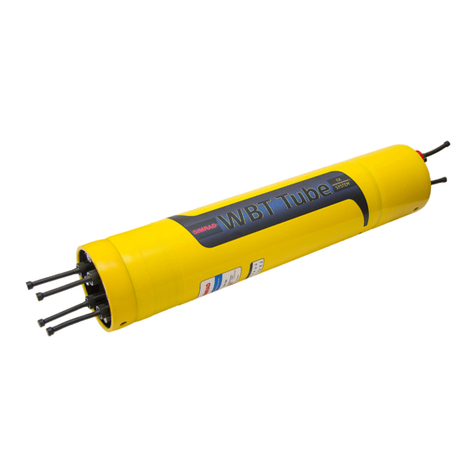
Kongsberg
Kongsberg SIMRAD WBT TUBE User manual

Kongsberg
Kongsberg SIMRAD IS15 Expander User manual
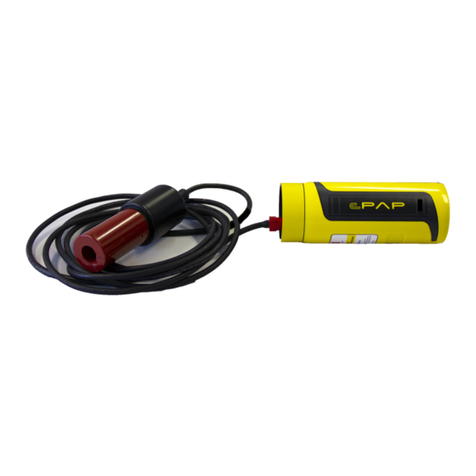
Kongsberg
Kongsberg cPAP MKII User manual

Kongsberg
Kongsberg cPAP30 User manual

Kongsberg
Kongsberg SIMRAD IS15 Expander User manual

Kongsberg
Kongsberg SIMRAD WBT MINI User manual
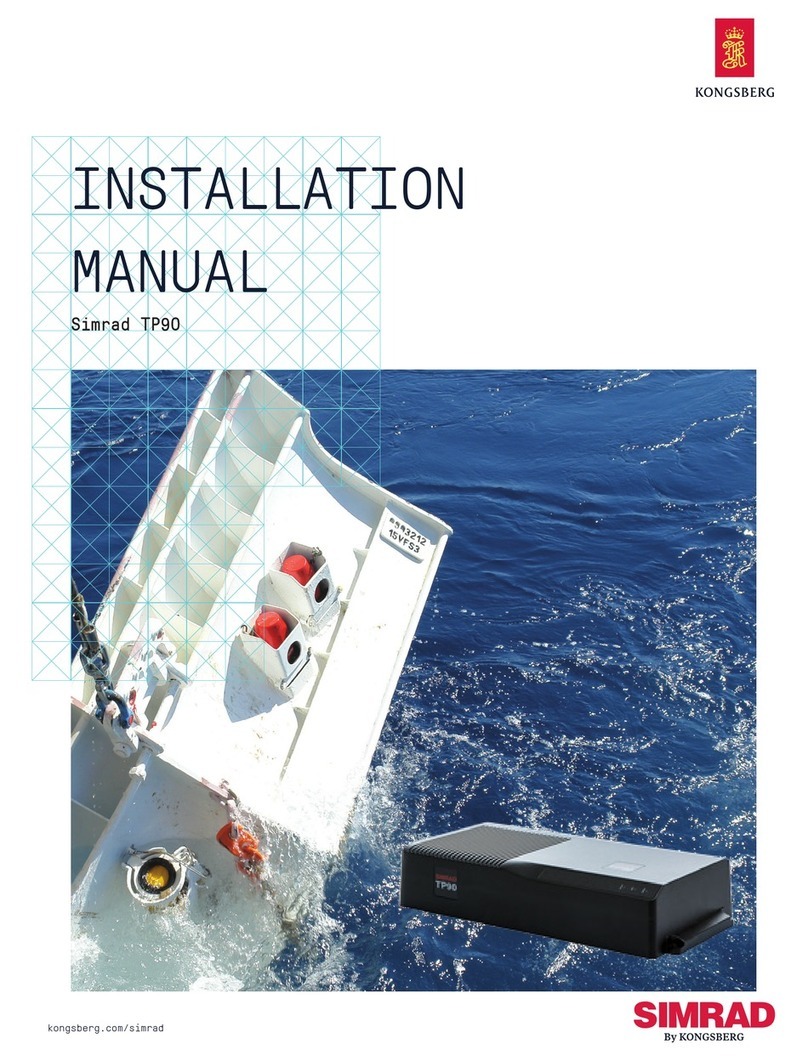
Kongsberg
Kongsberg SIMRAD TP90 User manual

Kongsberg
Kongsberg Simrad RS86 User manual
